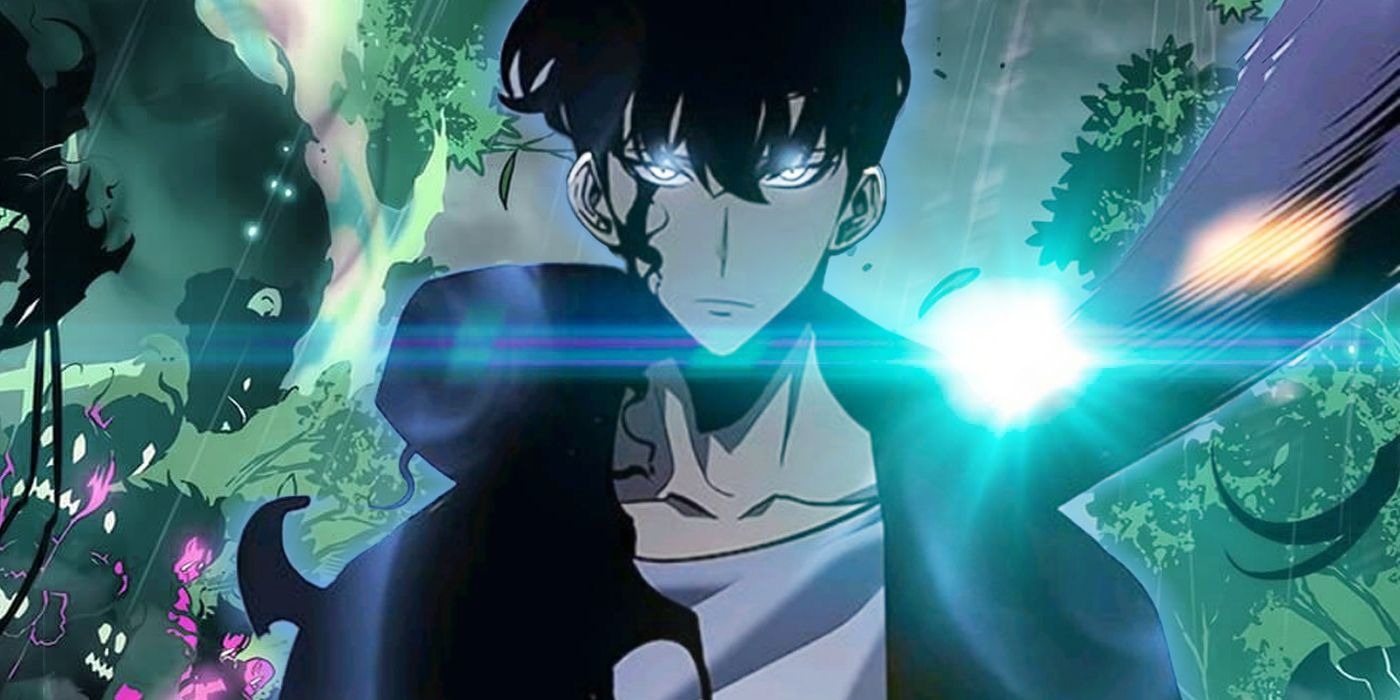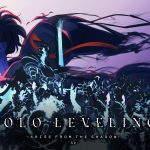The anime adaptation of Solo Leveling draws inspiration from the widely acclaimed manhwa, aiming to replicate its striking aesthetic while incorporating certain elements typical of anime. This adaptation stays true to the dynamic action scenes and distinctive character designs of the original work.
There are slight modifications though, intended to align with animation conventions. Solo Leveling’s artistic style, initially developed as a digital format in Korea, has a unique visual identity. The Solo Leveling Art Style model is an advanced AI system designed to generate images in the style of the beloved manhwa series.
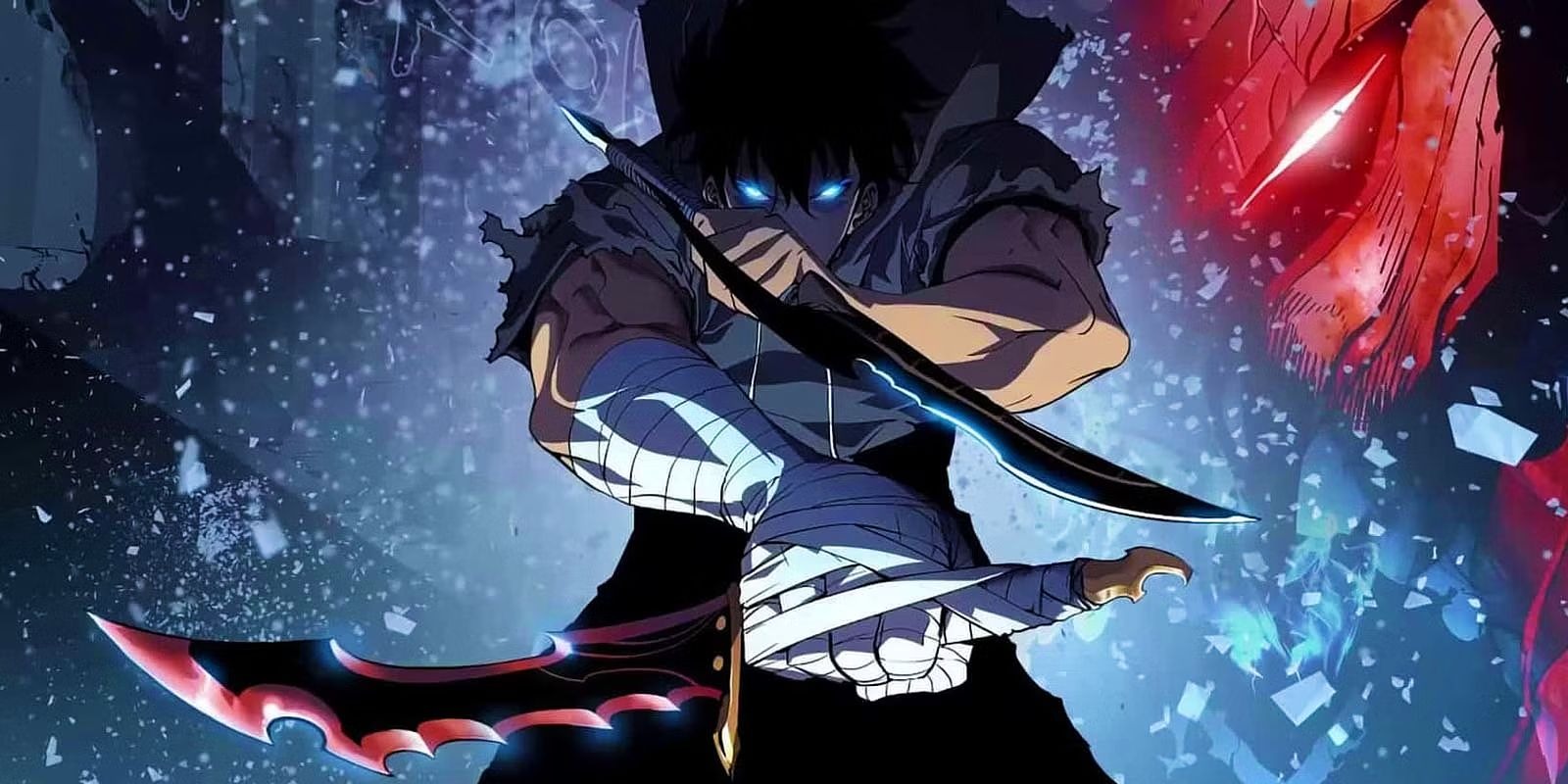
The artwork for the series is created by two artists, Jang Sung-rak and Gee So-lyung, who operate under the name RSDICE Studio. This AI model was trained using a combination of action-packed and more subdued scenes, with a particular emphasis on capturing the cinematic and high-energy feel that defines the series.
Art of Solo Leveling: From Sketches to Masterpiece
The approach to concept art in Solo Leveling is rooted in creating highly detailed and visually striking illustrations. This series upholds a consistently high standard of artistry, ensuring an engaging visual experience for its audience.
The backgrounds are intricately designed, contributing to the depth and immersion of the storytelling. The defining characteristics of Solo Leveling’s artistic direction include meticulous attention to detail, dynamic compositions, and a commitment to delivering a striking visual experience.
Anime vs. Manhwa
Distinct differences exist between anime and manhwa, as each is shaped by the cultural traditions of its respective country. Anime, originating from Japan, is characterized by its vibrant colors, expressive facial features, and diverse range of character designs.
It spans various genres and themes, reflecting the storytelling approaches commonly found in Japanese media. Unlike manhwa, anime is animated, allowing for fluid scene transitions and motion-driven storytelling.
Manhwa, on the other hand, refers to South Korean comics or graphic novels. Its artistic style tends to favor more realistic character depictions, with varied facial structures and body proportions. The artwork often integrates influences from both Western and Eastern aesthetics, forming a distinct visual approach.
Presented in sequential panel layouts akin to traditional manga, manhwa often incorporates cultural elements reflective of South Korean society.
While anime benefits from Japan’s well-established animation industry, manhwa has gained widespread international recognition, particularly through digital platforms such as webtoons. Both mediums offer dynamic storytelling experiences, each with its artistic sensibilities, cultural influences, and growing global reach.
Line Art
The precision and clarity of Solo Leveling’s line work contribute to its distinct artistic appeal. The intricacy of the lines does more than define characters—it enhances their aesthetic presence, making each design visually compelling.
During high-intensity battle sequences, the quality of the linework plays an essential role in emphasizing speed and raw power. Rather than merely outlining figures, the strokes themselves carry emotion, breathing life into characters and their expressions.
The artist’s expertise is evident in this aspect, ensuring that every stroke contributes meaningfully to the visual storytelling.
Shading
The shading techniques used in Solo Leveling serve a deeper purpose beyond simply adding depth to the visuals. The approach taken enriches the storytelling, setting the mood for various scenes while heightening the emotional impact.
Rather than functioning solely as a stylistic choice, shading is actively used to convey the psychological states of the characters. The ability of this technique to emphasize emotions is particularly striking, reinforcing the atmosphere of pivotal moments.
This method enhances the visual story line, strengthening the connection between the audience and the characters’ experiences.
Backgrounds
The detailed craftsmanship evident in Solo Leveling’s backgrounds reflects the artist’s dedication to world-building. Whether depicting urban cityscapes, eerie dungeons, or fantastical settings, every backdrop is carefully designed to enhance immersion.
These settings do more than provide a static visual foundation—they actively contribute to the story. From towering skyscrapers to mystical realms, each background is meticulously constructed to reflect the atmosphere of the scene, reinforcing the emotions and stakes of the story.
The evolving environments seamlessly integrate with character actions, enhancing the depth of the storytelling. The level of detail poured into the backgrounds elevates Solo Leveling’s artistic appeal, ensuring that every scene feels immersive and alive.
The Dark Gritty World of Hunters Fighting the Bright Magical Beasts
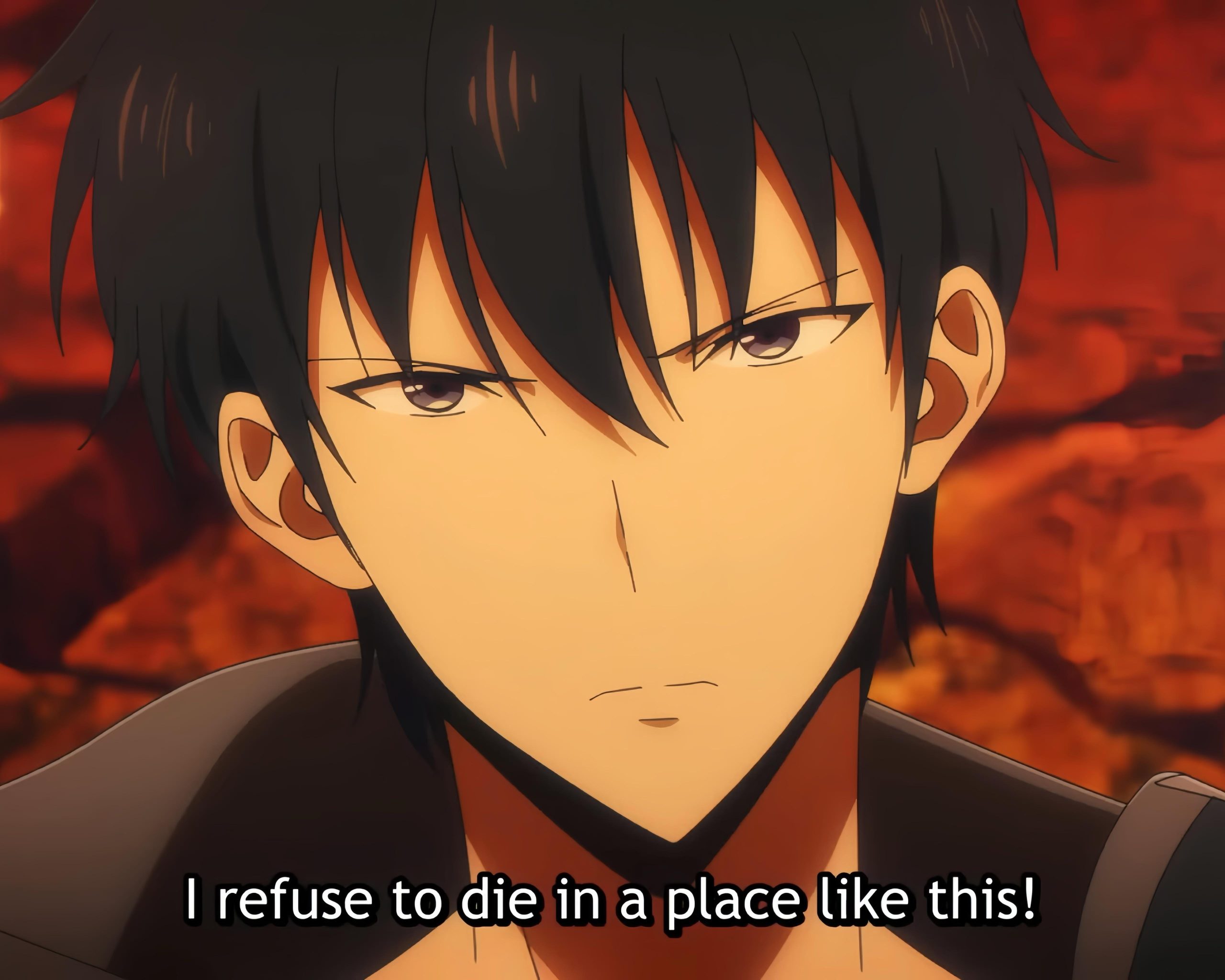
Lighting
The use of lighting and shadows in Solo Leveling plays a crucial role in defining the series’ aesthetic identity. Rather than serving as mere illumination, lighting techniques are employed strategically to create striking contrasts and enhance mood.
The interplay of light and shadow adds an extra layer of depth, making each scene more visually engaging. A deliberate use of complementary colors enhances this effect, ensuring that highlights and shadows work together to create a dynamic, immersive atmosphere.
Whether it’s the eerie glow of a dungeon or the blinding radiance of a climactic battle, the carefully controlled lighting guides the viewer’s attention and heightens the intensity of key moments. This approach contributes to the series’ visual impact, making each frame feel both dramatic and cinematic.
Magic Effects
The portrayal of magical abilities in Solo Leveling adds to the fantastical allure of the series, elevating the storytelling through visually mesmerizing effects.
Each magic sequence is intricately designed, from glowing energy waves to detailed mystical symbols, ensuring that supernatural elements feel both grand and immersive. These effects do more than serve as visual enhancements—they reinforce the importance of power dynamics within the story.
Every spell, energy burst, or mystical ability is carefully rendered to reflect the user’s strength and emotional state, making magical encounters feel weighty and impactful.
Whether depicting a surge of dark energy or the intricate details of an arcane symbol, the magic effects contribute to the depth of the series, making them a key visual and story element.
A Perspective on Magical Flow
Perspective
The artist behind Solo Leveling masterfully utilizes a variety of perspectives to enhance storytelling and create a sense of scale. A combination of one-point, two-point, and three-point perspectives ensures that environments and characters are positioned dynamically within each frame.
This approach not only strengthens depth perception but also adds movement to the visuals, making action sequences more immersive.
Strategic camera angles further amplify the intensity of key moments—low-angle shots emphasize power and dominance, particularly in showcasing Sung Jin-Woo’s growing strength, while high-angle perspectives highlight vulnerability and fear.
Through this carefully crafted use of perspective, Solo Leveling delivers a visually compelling experience, immersing readers in every confrontation and character interaction.
Flow
The seamless panel transitions in Solo Leveling give the series a fluid, almost animated quality, making for a smooth reading experience. The pacing of each scene is thoughtfully structured, allowing action sequences to feel dynamic and impactful while maintaining clarity.
The placement of panels guides the reader’s eye naturally through each moment, ensuring that the flow of movement and emotions remains uninterrupted.
By varying panel sizes and compositions, the artist enhances the dramatic effect of certain scenes, creating an engaging rhythm that mirrors the intensity of battle or the quiet tension of character-driven moments. This attention to paneling and flow is a defining aspect of Solo Leveling, making it feel as cinematic as it is compelling.
The Secret Behind the Character Design of Solo Leveling
Character Design
The characters in Solo Leveling are designed with a distinct visual appeal, ensuring that each one stands out while also reflecting their personality and role within the story. Through carefully crafted features, body proportions, and expressions, the artist conveys deeper insights into the characters’ strength, ideals, and evolution.
Readers can discern power levels, emotional states, and even character arcs simply through their design. The attention to these visual elements adds a rich layer of storytelling that complements the written story.
Color Palette
A striking aspect of Solo Leveling’s design lies in its thoughtful use of color, particularly the predominant shades of yellow and blue. These colors aren’t chosen arbitrarily—they contribute to the series’ entire atmosphere, helping to define tone and mood.
Blue hues often signify calm, intelligence, or an otherworldly presence, while yellow tones emphasize energy, intensity, and power. This careful color selection enhances both character portrayals and thematic depth, reinforcing the visual storytelling in a subtle yet impactful way.
Body Language
The way characters carry themselves in Solo Leveling speaks volumes about their development, emotions, and power changes. Sung Jin-Woo, in particular, undergoes a noticeable transformation, with his posture becoming more commanding as his strength grows.
His stance in battle exudes confidence, dominance, and a regal air, symbolizing his evolution into a formidable leader. Conversely, characters who are on the brink of defeat display physical cues of exhaustion, vulnerability, or fear.
The use of body language extends beyond action sequences, allowing even quiet moments to convey a wealth of emotions. This non-verbal storytelling element adds an extra dimension to the characters, reinforcing their arcs through visual expression alone.
Sung Jin-Woo, in particular, undergoes a noticeable transformation, with his posture becoming more commanding as his strength grows. His stance in battle exudes confidence, dominance, and a regal air, symbolizing his evolution into a formidable leader.
Conversely, characters who are on the brink of defeat display physical cues of exhaustion, vulnerability, or fear. The use of body language extends beyond action sequences, allowing even quiet moments to convey a wealth of emotions.
Sung Jin-Woo, in particular, undergoes a noticeable transformation, with his posture becoming more commanding as his strength grows. His stance in battle exudes confidence, dominance, and a regal air, symbolizing his evolution into a formidable leader.
Characters who are on the brink of defeat display physical cues of exhaustion, vulnerability, or fear.
Solo Leveling: A True Piece of Art
Among the many manhwa and manga available, Solo Leveling distinguishes itself through a combination of strong storytelling and masterful artistic execution. One of the series’ greatest strengths lies in its ability to maintain a clear, engaging plot without unnecessary complexity.
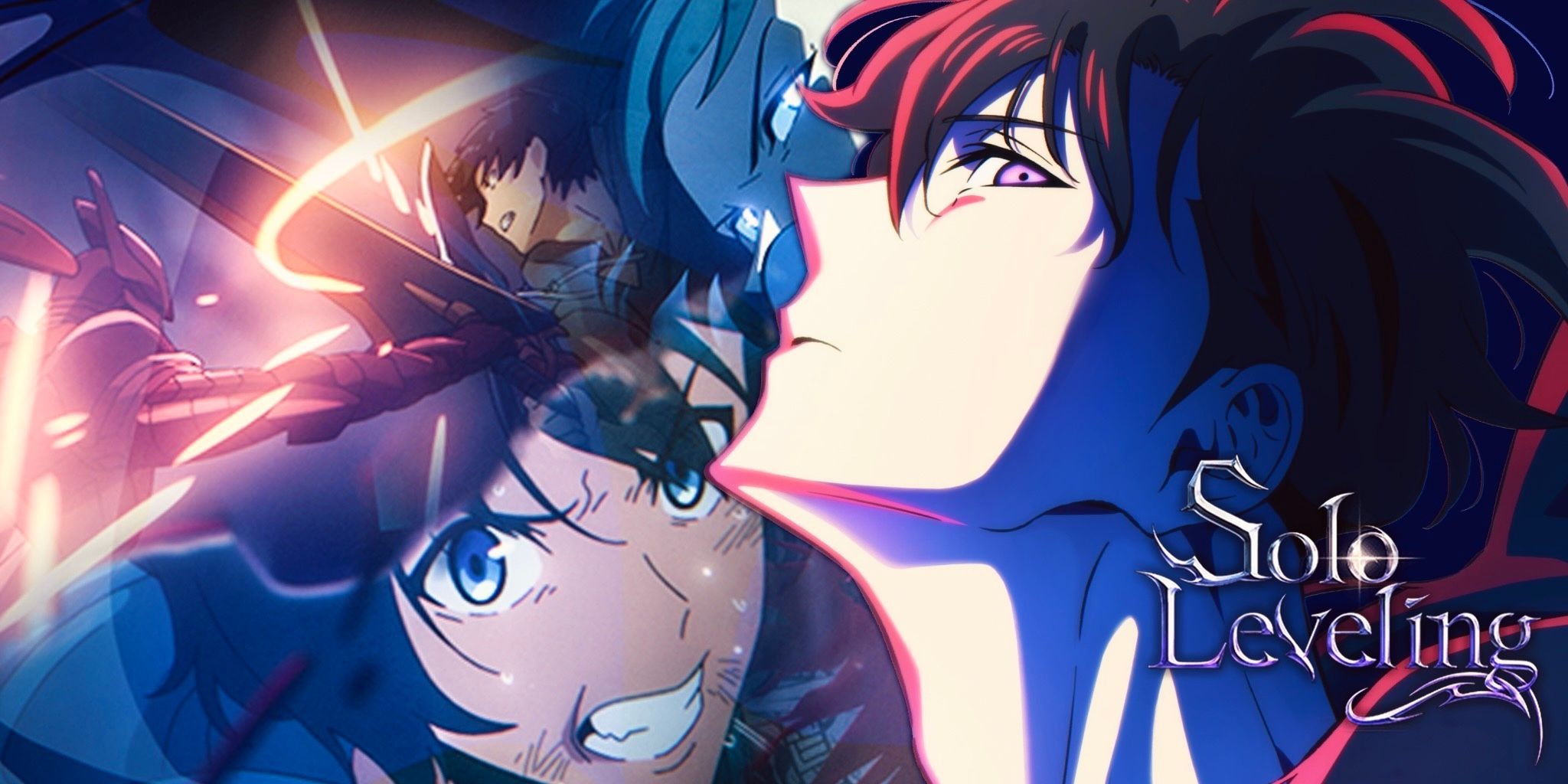
While some works become convoluted or difficult to follow, Solo Leveling strikes a balance between depth and accessibility, ensuring that readers remain invested in the journey.
Another standout feature is its structured world-building. New elements are introduced at a steady pace, allowing the audience to acclimate to the evolving universe without feeling overwhelmed. This method ensures that major developments feel natural and impactful rather than abrupt or forced.
Character development is another aspect where Solo Leveling excels. The protagonist, Sung Jin-Woo, undergoes a gradual yet compelling transformation, making his journey from an underdog to a powerful figure both satisfying and believable.
The supporting cast is also given room to evolve, contributing to a well-rounded story that resonates with readers. By blending striking visuals, smooth pacing, and engaging character arcs, Solo Leveling has secured its place as a standout in digital comics.
Its ability to balance stunning artwork with an engaging storyline makes it a masterpiece that continues to thrill audiences worldwide. The combination of detailed artwork, fluid action sequences, and compelling character development has solidified Solo Leveling as a standout in the digital comic media space.
Its ability to seamlessly blend immersive storytelling with breathtaking visuals has drawn readers in, making it one of the most celebrated manhwa of its kind. Beyond its technical excellence, the series resonates on an emotional level.
Sung Jin-Woo’s journey from weakness to overwhelming strength serves as an empowering story, reflecting themes of perseverance, transformation, and self-discovery. Readers connect with his struggles and triumphs, making his evolution all the more rewarding.
The artistry in Solo Leveling extends far beyond simple illustrations. From the intricate shading to the striking lighting techniques, each artistic choice enhances the impact of the story.
The bold use of perspective, seamless panel transitions, and expressive character designs contribute to the cinematic experience that sets this series apart. Every visual element works in harmony to heighten the tension, deepen character arcs, and immerse readers in its rich, dynamic world.
The worldwide success of Solo Leveling is a testament to its ability to thrill audiences through its meticulous attention to both story and art. With its growing fanbase and the anticipation surrounding its anime adaptation, its legacy continues to expand.
As a benchmark in modern webtoon artistry, Solo Leveling remains an unforgettable masterpiece that continues to inspire and influence digital comics for years to come.

